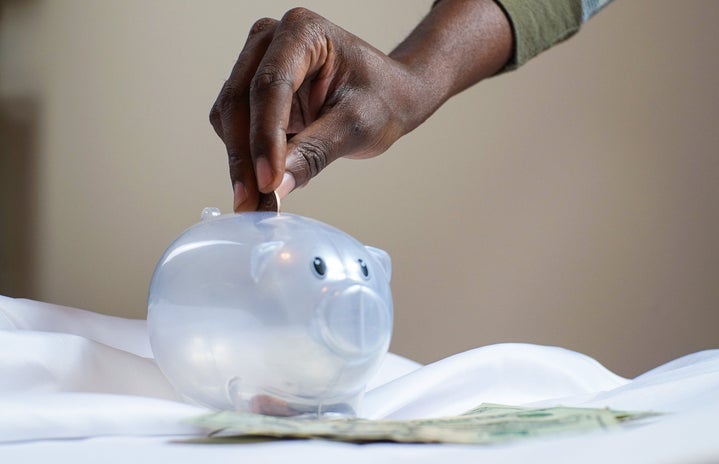Historically, much of the conversation around economic equality between men and women is centered around the wage gap. Current wage gap statistics cite women making 82 cents for every dollar made by a man. This number varies based on socio-economic factors, but across all races, the wealth gap is even worse. The pay gap refers to the difference in compensation between men and women, while the wealth gap refers to the difference in accumulation of assets between men and women. On average, women have $0.32 in wealth for every $1 a man has.
So why do women have less wealth than men? The pay gap plays a role, of course. Intuitively, having a lower income means you’ll probably have less wealth. But there are many other powerful factors at play.
Throughout much of history, women have not been allowed to work outside of the home and make their own money, let alone save and invest for their future. In fact, women couldn’t even open a line of credit in their own name until the 1970s. Today, women make up a significant portion of the workforce, but women occupy the majority of low-wage jobs. Women are more likely to work part-time than men due to caregiving responsibilities, which limits their capacity to save and invest money. Low wage jobs often do not have healthcare benefits or retirement plans, placing the onus on the individual worker to plan for emergencies and the future.
Occupational segregation is another historical factor continuing to affect women’s wealth. Occupational segregation is when a marginalized group is overrepresented in a job or field of work. This overrepresentation makes it easy to undervalue the work and lead to lower wages for employees. One major example of this is pink-collar work or care work. The high levels of gender segregation in these types of jobs have led to an ongoing depression of wages.
Despite women’s overrepresentation in low-wage jobs, more women than ever are going to college and even getting more degrees than their male counterparts. Awesome right? But women have also taken on nearly two-thirds of student loan debt in the US. Coupled with lower wages, this looming debt and limited capacity to save money may make it feel impossible to invest and build wealth.
This lack of wealth prevents women from being financially independent, instead making women increasingly reliant on parents or partners for economic security. On the flip side, financial independence can empower women to walk away from jobs or relationships that do not serve them.
In the past, marriage was seen as a guarantee of economic security for women. But today, fewer women are getting married or are getting married later in life. This may leave households dependent on a single income, thus putting a strain on female heads of household. This is compounded by the fact that insurance and taxes are higher for those who are unmarried. Pair this with the wealth gap and it’s tougher for women to achieve economic prosperity. As for partnered relationships, women on average live seven years longer than men, which means that money saved for retirement needs to last longer.
Savings alone are likely not enough to live on later in life. Money sitting in a savings account depreciates over time due to inflation and misses out on the opportunity to gain compound interest. Instead, having money in the stock market allows your wealth to grow.
Women are less likely to invest for two main reasons: lack of financial literacy and lack of financial confidence. One study from the Netherlands asking men and women various financial questions found this to be true. When there was an option to say “I don’t know” to a question on the survey, women chose this answer far more frequently than men. However, when the option “I don’t know” was eliminated, men answered 82% correctly compared to 73% correct for women. While a gap between men and women’s financial literacy exists, it is not an insurmountable gap. Closing this gap can have immense positive impacts in women’s lives.
So how do you start preparing for an independent financial future? The first is to start thinking about investing as you move into adult life. Envision what sort of life you want to live in your adulthood—do you want to buy your next car outright, to travel, start a business, save for a house, or retire early? The earlier you start thinking of these things, the earlier you can start to develop sustainable financial habits to achieve your goals. The younger you start investing, the greater amount of wealth you’ll have later in life. By some calculations, the difference between investing $100 for retirement at age 25 versus age 35 is nearly $70,000 by age 65.
Save and invest as much as you can now, before the compounding expenses of adult life begin to stack up. Think about your future, while also increasing your financial literacy. There are many great resources for developing confidence in this area.
Podcasts like The Financial Feminist, Planet Money, and Bloomberg Businessweek are great places to start. Websites like Investopedia, Ellevest Magazine, and Forbes are other excellent financial resources. Various platforms like Ellevest, E*Trade, and Betterment have low barriers to entry for young investors.
As you enter the workforce, look for retirement benefits, specifically for a 401(k) matching option. A 401(k) is a typical retirement plan offered by most private companies. This type of plan allows you to put a percent of your monthly salary into this account. Many companies have options that match a certain percentage of your contribution. A typical contribution would be 6% of your salary into your 401(k) and for your employer to match 50% of that amount. For example, if you were making $50,000 per year investing 6% into your 401(k), you would be contributing $3,000 per year into the fund matched by $1,500 from your employer. The technical term for this in the financial world is “free money!”
While it may seem daunting to think about buying a house or saving for retirement, it is essential for your long-term financial independence. Starting to build your knowledge base for saving and investing in your 20s will have exponential benefits in your adult life. Not only that, but it helps to close historical gaps in economic prosperity between men and women.





